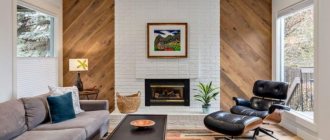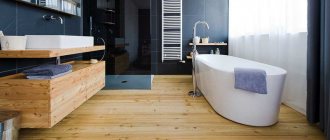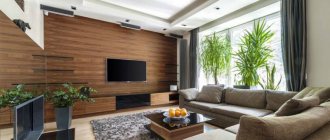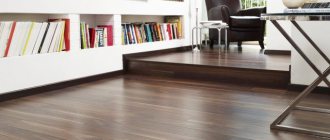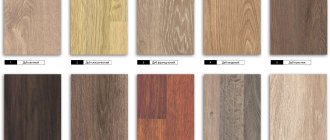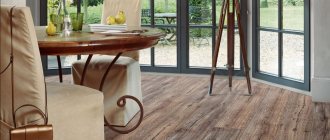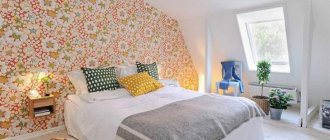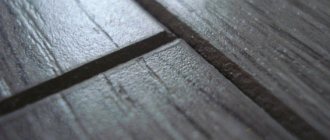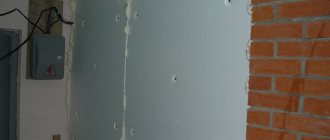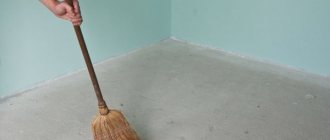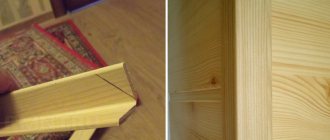Why laminate?
Laminated panels have gained popularity as wall decoration in the bedroom due to their impeccable appearance and affordable cost. Not everyone can afford an expensive panel made from solid wood, but choosing a laminate to suit any owner’s budget is not at all difficult.
The wide range of colors of the panels also plays a huge role. Laminate on the wall in the bedroom fits perfectly into any interior, as the material has many textures and shades.
Another advantage of the panels is their resistance to the external environment. The planks consist of several layers, one of which is a protective coating. Thanks to special processing, the products have become resistant to moisture, which allows them to be cleaned of dirt using the wet method.
The final feature of laminate is its ease of installation. Anyone can install it on the bedroom walls, which, in fact, explains the popularity of slatted materials in the field of interior design.
Advantages and disadvantages
Laminate is a relatively inexpensive and accessible material that will cost much less than real wood panels. At the same time, it is in no way inferior in quality to them if you choose the right wear resistance class. Even outwardly, it is quite difficult to distinguish a high-quality laminate from the wood under which it is made.
Decor
The collections of major manufacturers delight with a variety of shades and textures. In addition to the classic wood-look laminate, there are entire series of stone, masonry, monolithic colored coatings and other interesting solutions.
Wear resistance and insulation
Wear-resistant laminate is a practical coating that does not require complex maintenance, unlike natural boards. It can be wiped with a regular cloth and polished with special products.
Finishing walls with laminate improves the heat and sound insulation characteristics of the room. And if necessary, there are special moisture-resistant, fire-resistant and impact-resistant collections.
Application
You can even handle laminate installation yourself thanks to convenient locks. Of course, when laying a coating on a wall, there are some nuances regarding laying laminate on the floor. But even this can be dealt with if you approach the issue carefully and carefully.
Laminate is a lightweight material, compared to heavy types of wood, ceramic tiles or natural stone. Due to this, it does not overload the base and can even be used to cover decorative plasterboard structures.
Flaws
When laying laminate, the wall must be perfectly flat and without drops, otherwise you will need lathing. The material is sensitive to humidity and temperature changes, so only specialized series are suitable for kitchens and bathrooms. Such cladding requires space and takes up valuable centimeters, which is why it is not the best option for small rooms.
How to choose laminate for bedroom walls?
When purchasing laminated panels, you should pay attention not only to their appearance, but also to their performance characteristics. All products of this type are divided according to two main criteria:
- wear resistance;
- fixation method.
To place laminate flooring on the wall in the bedroom, you should not purchase the most durable materials. In this case, the operation of the finish does not imply heavy loads. For this reason, you can significantly save money by choosing products of 21-23 strength classes. They are the thinnest and lightest.
Next, the material is considered according to the method of fixing the panels. The simplest varieties are connected to each other using glue. High-class laminate is distinguished by the presence of a Click-lock, which ensures a strong and dry connection of adjacent planks.
Numerous photos of laminate on the wall in the bedroom, which can be found in fashionable design projects, demonstrate the absolute similarity of both types of panels. The main difference is the method of their installation, which does not in any way affect the final appearance of the cladding.
Is installation possible in the bathroom?
A question that causes a lot of controversy. After all, laminate is an artificial tree. And it is no less afraid of large amounts of moisture than natural ones - which is typical for toilets and bathrooms.
However, the use of this material in the bathroom is still possible. If several conditions are met. The first is good ventilation. Today there are modern sensors that turn on the fan when the humidity level reaches a set point. And the second condition is accuracy. You still can’t pour water on the laminate, so in the bathtub or shower area it’s better to choose wood-look porcelain tiles.
Photo: Instagram iceramic.moldova
Photo: Instagram iceramic.moldova
Features of fixing panels using the adhesive method
When studying the available methods of attaching laminate to the wall, it becomes obvious that fixing with glue is the simplest. However, there is one important nuance in it: in order for the panels to lay beautifully on the surface, the base must be perfectly flat.
If the wall has numerous flaws and defects in the form of depressions and bumps, it will not be possible to align the planks smoothly; gaps will be visible between them. In such a situation, it is better to level the walls with plaster or sheets of drywall.
When the surface becomes smooth, you can begin finishing it. This is done as follows:
- The panel is cut to the required size with a jigsaw and laid on the floor (back side up).
- Liquid nails or special glue are applied to the underside of the laminate using a zigzag motion.
- The panel is pressed tightly to the surface, and excess composition is wiped off.
This way the entire section of the wall is finished. If heavy panels are used in the work, it is not worth covering the entire surface at once. Otherwise, they will slide down under their own weight. It is better to pause for 30 minutes after every third row.
Necessary tools and preparatory work
Depending on which fastening method was chosen, you should prepare:
- laminate panels;
- glue or special composition;
- a hacksaw for wood (for metal for working with clamps);
- self-tapping screws;
- primer impregnations;
- staples.
Such a layout is often found not only in fashionable studio apartments, but also in classic homes with interior partitions.
Once the installation method has been chosen and all the necessary tools and materials have been prepared, you should begin preparing the wall surface. They must be brought to a plane, otherwise the laminate will bend. The voids underneath can also cause the panels to break if you lean on them.
It is worth noting the wear resistance of such a popular material.
When the wall is leveled, it must be carefully primed - this manipulation ensures reliable adhesion between the glue and the wall.
The laminate itself is very durable.
If the wall is damp and damp, for example, it is located at the end of a building that constantly gets wet, then you can additionally walk over it with an antifungal compound.
Installation of panels with locking connection
If panels with a lock were chosen for cladding, the laminate will be attached to the wall after creating the sheathing. This method has one drawback - the assembled frame “eats” the area of the room by 10-15 cm. On the other hand, such fixation allows you to hide various utilities under the base, place insulation or soundproofing material.
To install laminate using the frame method you will need:
- wooden slats (can be replaced with metal profiles);
- small nails (or metal screws);
- clasps or staples.
Important! The sheathing pitch should not exceed 600 mm.
If the laminate is positioned vertically, the frame bars are mounted horizontally, and if horizontally, the frame is created in the vertical direction.
Next, the panels are fixed to the assembled base with construction brackets or special clamps. The cladding elements are connected to each other using a factory lock.
When the panels are arranged horizontally, the cladding elements are laid out in a checkerboard pattern. This makes the finish more presentable and reduces the load on the fasteners.
Corridor design: a combination of attractiveness and practicality
When decorating a hallway or corridor, preference is given to materials that are easy to care for.
Practicality of the material in any room
Since the walls here can often get dirty, laminate will be an effective solution. For finishing, you can, for example, decorate all the walls with panels or select only one of the walls.
The corridors are often narrow and sometimes poorly lit. To compensate for this drawback, it is better to prefer a fairly light coating - after all, it is still easy to maintain.
Design solution for wall decoration
But the gloomy corridor will take on a new life - it will become lighter and, as it were, even larger.
Recommendations for placing laminate on walls
A well-placed laminate on the walls can not only decorate the interior of a room, but also completely change its perception. Slat finishing can visually expand the room or make the walls taller, the main thing is to position it correctly.
There are several ways to lay panels:
- vertical;
- horizontal;
- diagonal.
When choosing a direction, they proceed from the characteristics of the room itself. For example, in rooms with low ceilings, vertical masonry should be used, which will visually raise the top edge.
In narrow spaces, a horizontal laminate design on the wall is appropriate.
But the diagonal arrangement should be used only in spacious rooms, since this direction of the panels looks impressive only on a large area.
Selecting suitable laminate classes
For the floor, a board with a strength of class 31 or higher is usually required, but for walls a less durable, but cheaper and lighter-weight option is suitable. The panels should have a low density and length - be light. It is easier to attach such material by holding it suspended. To decorate the wall with laminate in the bedroom, you can choose household classes 21-23.
For rooms with high levels of humidity (bathroom, kitchen, hallway) you will need a moisture-resistant or waterproof type of coating.
Tips for choosing panel shades
The degree of harmony of the entire interior depends on the correct choice of color for the slatted finish. In order for the paneled wall to successfully combine with the design of the room, the shade of the laminate should be similar to other finishing materials.
If the main purpose of the cladding is to create contrast, then the remaining surfaces are decorated in subdued colors. In this case, the owner will receive the most successful design. Laminate on the wall in the bedroom can be combined with the flooring. This will make the edge between the two planes invisible, which will visually expand the space.
You can also select panels for furniture, window curtains or small decor in the room. When creating a design, it is important to prevent color chaos and combine shades that are similar in tone.
Decorating a balcony or loggia
In the interior of the balcony, laminate has become often used for cladding. It protects wall insulation from moisture, and you can also use it to make shelves and line cabinets on the balcony. An excellent option if the balcony serves as a study.
Which panels to choose for different interior styles?
The color of the panels should match the design of the room itself. Thus, for interiors in country and loft styles, finishing in dark colors with a rough texture is appropriate.
In the Scandinavian direction, it is better to use light-colored cladding. It will go well with furniture in warm wood tones.
But for high-tech interiors, the most advantageous option is panels with imitation stone, concrete or brick.
Gray shades will look great in a minimalist interior. Photos of laminate on a bedroom wall in graphite, silver and calm gray tones demonstrate the calm, restraint and sophistication of such solutions.
Yellowish panels create an atmosphere of naturalness, naturalness, which is relevant for rustic style and interiors with hints of Provence. But in classicism, dark brown and black laminate will look better.
We highlight in the living room
The living room, decorated with laminate, can look just as interesting as the bedroom.
There are no clear rules on how to do it right
It plays not only a decorative, but also a practical role. In addition to an impressive design that creates coziness, laminate allows you to hide, for example, wires from a TV behind the skin.
For your information! Ease of maintenance is also important - stains, fingerprints and other contaminants are easily removed from the surface.
We enliven the interior with bright decor
Warm shades of wood add relaxation to the room, while cool shades create an unusual, intriguing impression.
With such a design of the fireplace, the atmosphere is given masculine severity and even asceticism. In large rooms, you can cover a column, one of the walls, or just a corner in this way.
Laminate flooring must be laid on a perfectly flat surface.
If such a wall seems empty in the living room, you can revive and balance it for a harmonious interior using the following techniques:
- decorative shelves to match on which to place souvenirs or books;
- arrange decorative beautiful sconces;
- hang paintings or photographs in stylish frames.
We revive it with decorative shelves to match
For your information! The selection can only affect the recreation area or a fragment of the wall with a TV.
Laminate on walls: pros and cons
Walls lined with laminate look fashionable and stylish, but how does such a finish manifest itself in practice? Is laminate cladding on a bedroom wall really practical? Reviews from owners of similar decor say the following:
- The panels are easy to clean: fingerprints and dust can be wiped off with a dry sponge.
- A wall lined with laminate is quite pleasant to the touch, as the panels have good thermal insulation abilities.
- The ease of installation of slats allows you to complete the finishing yourself, which makes it possible to save on paying for specialist services.
- At an affordable cost, the material has a long service life.
Speaking about the disadvantages, we can highlight the following:
- If you compare laminate with wood, then in terms of environmental friendliness it definitely loses. This is facilitated by the presence of dyes and resins in the panels. On the construction market you can find options that are completely safe for health, but they have a fairly high price tag.
- Furniture MDF panels for wall decoration are somewhat cheaper than laminate cladding.
- In homes with small children, the likelihood of laminate flooring quickly failing increases. This is due to the fact that the material is vulnerable to mechanical stress and sharp objects.
As you can see, the negative properties are quite relative. If the homeowner’s main goal is to create an original and not too expensive interior, then the idea of placing panels on the wall is definitely worth considering.
Care
When choosing a practical finishing material, further care of the surface plays an important role. If the requirements for the technology of performing the work are met and the operating features are taken into account, then caring for the laminate is a standard procedure for wiping off dust with a damp cloth and non-aggressive detergents. If desired, you can open it with varnish.
Decorating a bedroom with laminate is a practical option for a contrasting wall in a place where it is convenient. At the same time, the durability of the material will not allow it to be replaced due to wear. Most likely, the apartment owner will simply want to change the stop, rather than the panel becoming unusable.
Types of laminate installation
As mentioned above, installing laminate flooring does not take much time and anyone can do it. But before that, you should decide what is the best way to do this.
Adhesive installation involves attaching panels to the wall using special glue or liquid nails. This method is considered the most labor-intensive, as additional preparation of the walls is required. But at the same time, it is often used due to the possibility of horizontal and vertical placement of the laminate.
Experienced craftsmen advise leveling the walls so that the height difference does not exceed 3 mm. Otherwise, the laminate will not lie flat, which is unacceptable in modern interior design. As for the installation itself, it’s better to start from the lower left corner
Particular attention should be paid to ensure that the panels do not move during operation. Only taking into account all the nuances, installing laminate will not take too much time
The next type of laminate installation is frame. Unlike the previous option, this one does not need to prepare the walls so carefully. This is due to the fact that the installation uses a sheathing, which consists of wooden blocks. It is to this that the laminate is attached using special fasteners.
There is another type of laminate installation - combined. It is used quite rarely, despite its simplicity of implementation. To simplify the installation process a little, a special sheathing is created. The laminate is glued directly to it, as in the first option.
But it is very important to calculate everything correctly so that the material lies evenly
A rather unusual use of laminate is increasingly gaining popularity. After all, this is a great way to transform a familiar interior and place accents. And due to the texture of the material, you can give the room a special atmosphere of comfort.
Relevance in the interior
A bedroom is a place in an apartment or house where there is no high humidity, the materials used for interior decoration are combined with each other, and the complete picture in the interior compensates for the possible lack of light.
However, even in such conditions that are unpretentious for repairs, it will be necessary to use practical, wear-resistant building and finishing materials. Laminate classifications are standards used by manufacturers. So, for the bedroom you can use either class 31 laminate or 10-12 mm thick. The choice depends on the quality of the surface: for uneven walls it is better to choose the second option, and for walls made of plasterboard or a pre-putty wall, you can use an inexpensive option for finishing material of class 31.
Practical DIY wall decoration in the bedroom
Page navigation
The type of laminate fastening system to the surface depends on the quality of the walls. If an adhesive fastening option is suitable for a perfectly flat wall, then for problematic or non-standard surfaces it is worth choosing a material with tongue and groove locks. In both options, installation work can be done independently, adhering to basic rules, guided by our advice.
